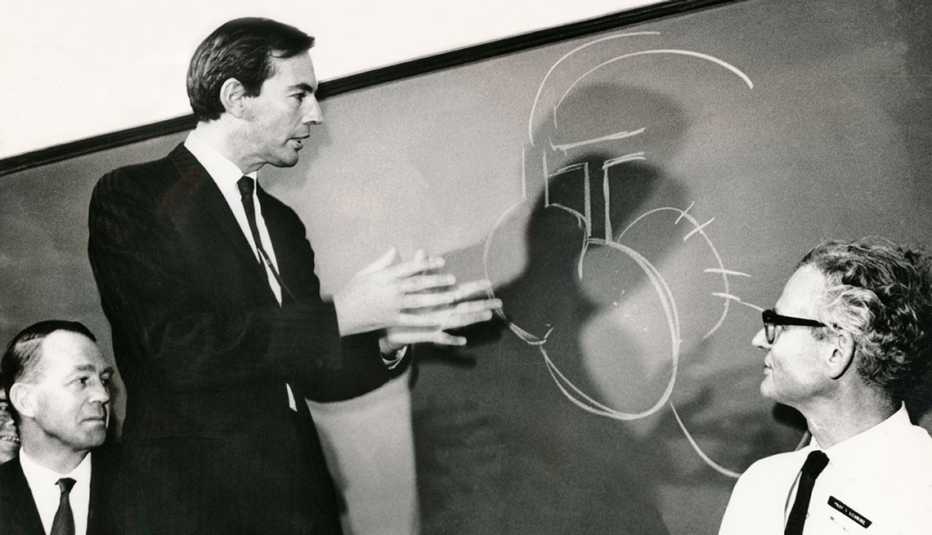Staying Fit


Dec. 3 marks the 50-year anniversary of the first adult human heart transplant, performed by heart surgeon Christiaan Barnard at Groote Schuur Hospital in Cape Town, South Africa. The groundbreaking procedure that gave the heart of a 25-year-old woman, who died after being struck by a car crash, to a 55-year-old man dying of heart disease wasn’t done without its share of medical-world controversy. Barnard, the story goes, had trained under American physicians Norman Shumway and Richard Lower, who pioneered the surgery. From some people's perspective, Barnard “scooped” the American doctors by performing his surgery just one month before Shumway would go on to achieve the first adult-to-adult heart transplant in the U.S., at Stanford University Medical Center, on Jan. 6, 1968.
Drama aside, any and all transplant surgeries at the time were revolutionary and, really, still are. “Nowhere else in medicine do you take a patient with two feet in the grave and have them walk out the front door,” says Jon Kobashigawa, M.D., the Thomas D. Gordon Chair in Heart Transplantation Medicine at Cedars-Sinai in L.A., who’s been performing transplants for 33 years. “And that’s why this is so stunning and so remarkable. Patients we presumed were dead can basically be brought back to life and achieve a tremendous quality of life.”


AARP Membership— $12 for your first year when you sign up for Automatic Renewal
Get instant access to members-only products and hundreds of discounts, a free second membership, and a subscription to AARP the Magazine.
Kobashigawa stresses the importance of donors in the decades-long improvement of the procedure. “The progress in transplantation is really due to the families who donated their loved ones’ organs. If they had not, we would not be able to give patients a second chance to live.”
Here's a look at the trailblazing surgery by the numbers.
50
Years ago the first human heart transplant surgery took place, in Cape Town, South Africa. At the time, only human kidneys had been transplanted successfully.
18
Number of days that the first heart transplant patient lived after surgery.
18
The number of heart transplants performed in 1970, after dropping from 100 in 1968. These surgeries picked up again in the 1980s, after the development of the anti-rejection drug cyclosporine, which meant that “only half the patients would have organ rejection, instead of everybody,” Kobashigawa notes.
10-15
Average number of years by which the typical heart transplant extends the life of a recipient today.

































































More on health
Medical Breakthroughs: Save Your Eyes and Ears
Video camera glasses, lens implants and ear drum stimulators will help improve senses